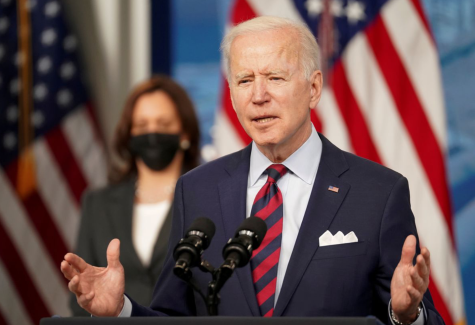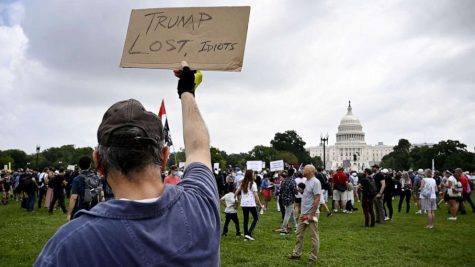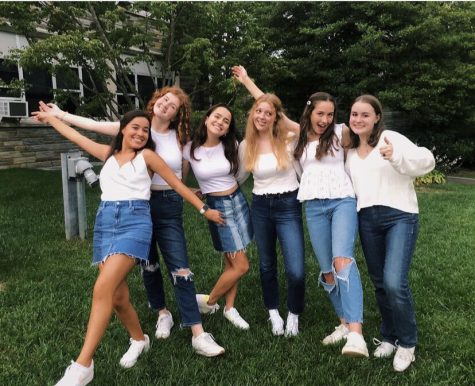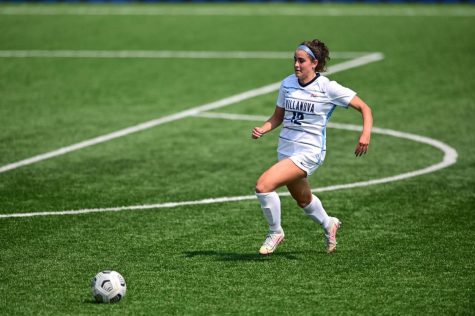Public Policy Society Hosts Politics of Vaccine Distribution
April 29, 2021
The policy surrounding the approval and distribution of COVID-19 vaccines in the United States has been a topic of extensive discussion and heated debate on Capitol Hill. Policymakers face many moving pieces in their efforts to vaccinate as much of the population as possible in an organized and timely manner.
As part of its ongoing speaker series, the University’s Public Policy Society hosted a panel on the legislative processes and issues behind the vaccine rollout. This virtual event was held on April 21 with the title “The Politics of Vaccine Distribution.”
Adjunct Clinical Faculty member Heather Carney, BSN, RN began the event by introducing mediator Alex DelPizzo and panelists Nolan Ahern and Trish D’Antonio, GSA.
DelPizzo, a 2008 graduate of the University and partner at Thorn Run Partners, had received his second COVID-19 vaccine hours prior to the panel. DelPizzo asked panelists to share their insights about the development of the vaccines, demographic and political issues surrounding the rollout and the impact of vaccine availability on older Americans.
Ahern, a 2013 graduate of the University and a Professional Staff Member at the United States House Committee on Ways and Means, discussed his role in vaccine policy and commended the efficiency of the development of the vaccine.
“To have gone from identifying this new pathogen to introduction of multiple viable vaccines with high efficacy rates in under 12 months is just pretty remarkable,” Ahern said. “It shows you that when the levers of government and the private sector are leveraged together properly and appropriately—and it’s not like there weren’t bumps in the road, there certainly were—but just an amazing achievement.”
D’Antonio is the Vice President of Policy and Professional Affairs at the Gerontological Society of America. She serves as a liaison to the FDA, DEA and other state and federal organizations. D’Antonio discussed the impacts of COVID-19 on older Americans and reiterated the importance of collaboration between the government and the private sector in producing vaccines.
“When we saw Covid impact older people in such a way, particularly those in congregate living, and the people who care for them…it was really important for us to get together and be able to represent people as far as what it would take to provide resources,” D’Antonio said. “And one of the things that I think was just remarkable in this effort is the bipartisanship and also the public-private cooperation and interaction.”
One quarter of the U.S. population has been fully vaccinated. However, there are disparities present among the groups and communities that have been receiving vaccines. According to recent CDC data, 65 percent of those who have received at least one dose of the vaccine are white, 11 percent are Hispanic, nine percent are Black, five percent are Asian, one percent is American Indian or Alaskan Native and less than one percent are Native Hawaiian or other Pacific Islander.
These disparities can be partially attributed to pockets of vaccine hesitancy or skepticism, which are particularly prevalent among minority populations, those living in rural areas and those with lower levels of education. DelPizzo asked panelists about work being done in Congress and by organizational stakeholders to educate hesitant groups and to continue to build vaccine confidence. Ahern, who has worked on legislation surrounding vaccine distribution, underscored the effectiveness of community-based vaccine distribution as opposed to larger, FEMA-run mass vaccination sites.
“You want to make it as convenient for folks as possible…the national pharmacy program has obviously produced a lot of results…I’ve seen a lot of people getting it that way, in that sort of bracket that is a little bit undervaccinated right now,” Ahern said. “And the community health centers, too, have been, from our understanding, a terrific partner and a way to reach those underserved and oftentimes rural communities.”
D’Antonio elaborated on education and confidence-building efforts in vaccine-hesitant communities.
“We have to recognize that not everyone is coming with the same hesitancy or the same reasons for their hesitancy,” D’Antonio said. “There’s been funding in these bills that provide resources for CDC…and other federal organizations to be able to help us develop those tools and resources that we need to help continue educating people, and trying to get people to understand how they can move past the hesitancy that they might have.”
Following the panel, DelPizzo opened up the conversation for a question and answer session.
While the vaccine rollout has been moving quickly under the administration of President Joe Biden, there is still much work to be done and many different mindsets, communities and complications to consider.











